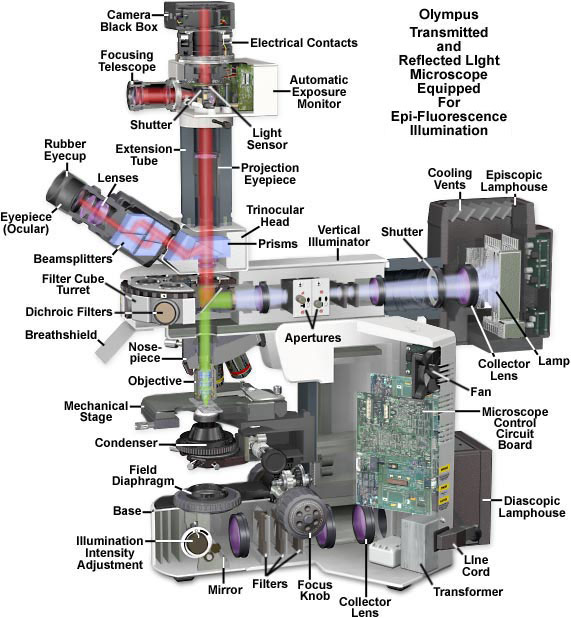Microscopes with an upright-style frame are capable of producing fluorescence illumination either through episcopic or diascopic optical pathways, although the latter is rarely used today. Epi-illuminators usually consist of a mercury or xenon lamphouse coupled to a vertical illuminator that is positioned above the main frame in a separate assembly. The microscope nosepiece and transmitted light components (diascopic illuminator, condenser, field diaphragm, filters, etc.) are built into the main frame, while fluorescence components are housed in the vertical illuminator. These illuminators often contain a revolving or sliding turret that houses four to six "cubes" that contain a mixture of interference filters including a barrier filter, dichroic mirror, and an excitation filter. As illustrated above, light emitted from the lamp positioned in the episcopic lamphouse passes through a collector lens and then the field and aperture diaphragms before entering the first interference filter in the cube set, the emission filter. This light is then directed through the objective and onto the specimen by a special dichroic mirror that reflects certain wavelengths while passing others. Secondary fluorescence, emitted by fluorophores residing in the specimen, travels back through the objective and the dichroic mirror before passing through a barrier filter and into the microscope eyepieces or camera system.
Olympus BX51 Fluorescence Microscope Cutaway Diagram
Sorry, this page is not
available in your country.
